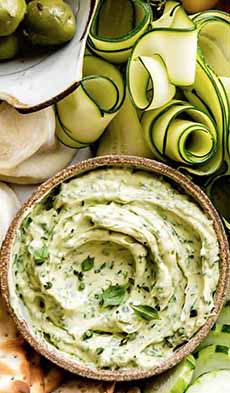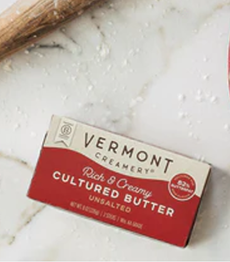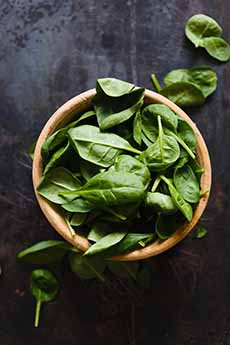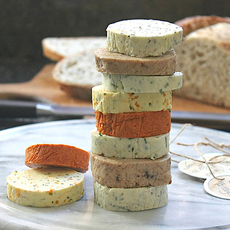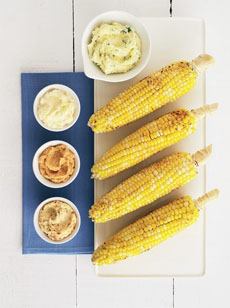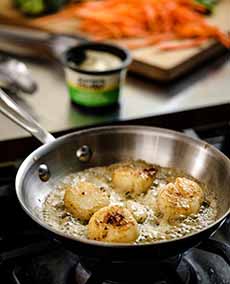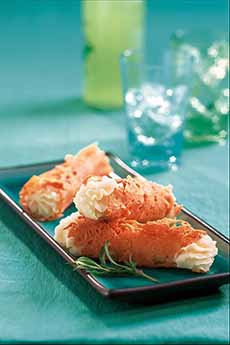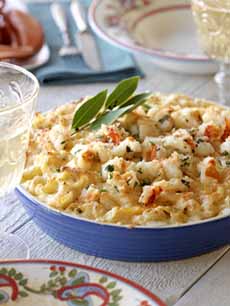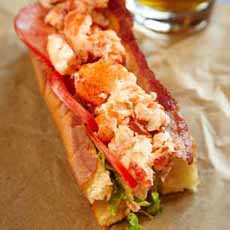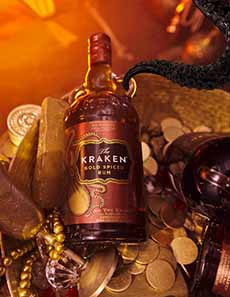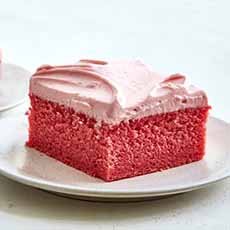|
Last month for Mother’s Day we treated ourselves to a Lady M Mille Crêpes Cake in the special flavor for the season, lavender (photo #3). It was divine (here’s our review).
Now, in time for Father’s Day and all of summer, Lady M launches another flavor (and we hope, a permanent addition to the collection), Lady M’s Guava Mille Crêpes Cake (photo #1).
If you’re a guava lover—and we sure are—you’ll go wild for this luscious new cake.
If you’re not familiar with the sweet, succulent flavor of pink-fleshed guava (photo #2), this is an exquisite introduction.
Layers of at least twenty handmade paper-thin crêpes are spread with guava-infused pastry cream. In the center of the layers is a filling of guava jam.
Topped with a rosy pink guava glaze, this divine new cake will transport you straight to paradise. (Are we raving too much? Take a bite and you’ll join us.)
All of THE NIBBLE’s tasters, who have loved every Lady M cake we’ve featured, gave an extra “wow!” to the guava flavor.
Lady M says the inspiration for this tropical treat is the Hawaiian Guava Cake (photo #6). We enjoy a great HGC, but Lady M’s Guava Mille Crêpes Cake is in a class of its own.
Order Your Cake
Head here, and the cake will be rushed to you directly from Lady M. It’s also sold on Goldbelly.
About Lady M
Japanese-French bakery Lady M Confections creates irresistible cakes for special occasions and everyday desserts, combining French techniques with Japanese sensibilities.
Founded in 2001 in New York City, the cakes are available at retail boutiques and online. The Mille Crêpes Cake, an innovation in the world of pastry, is its signature creation.
THE HISTORY OF GUAVA
Guava is a tropical fruit that is cultivated around the world.
The common guava (Psidium guajava), also called apple guava and lemon guava (because of its shape), is the fruit of a small evergreen tree in the myrtle family (Myrtaceae). Botanically, the fruits of the tree are berries.
“Cousins” in the family include other foodstuffs such as acca (feijoa), allspice, and clove.
Guavas are believed to have originated in southern Mexico or nearby in other Central American countries. It was transported easily to northern South America and the Caribbean [source].
The fruit was highly regarded by the indigenous peoples of the Americas.
The ancient Mayans and Aztecs valued guava fruit as a food source and its leaves and bark for medicinal purposes—for wounds, respiratory and digestive ailments.
The trees were carried southward as far as Peru, where archaeological sites have yielded evidence of guava cultivation as early as 2500 B.C.E.
In the early 1500s, Spanish explorers discovered the indigenous peoples growing guava trees in what is now Mexico.
Spanish and Portuguese explorers and colonizers carried guava plants on their voyages to the Caribbean, Brazil, and Southeast Asia.
In that latter region, in countries such as India, Indonesia, the Philippines, and Thailand, guava became an integral part of the cuisines, used in both sweet and savory dishes.
The Guava Evolves
Over time, different varieties of guava were developed through selective breeding and cultivation.
Today, there are more than 400 guava cultivars, which vary in size, shape, color, and flavor.
Only a few dozen varieties are commercially cultivated [source]. Guava was introduced to Florida in the 19th century. Historical records indicate that Seminole Indians were cultivating guava trees in Northern Florida in 1816 [source].
Fast-forward two centuries: So much guava is grown in Florida that in the 1970s, Tampa, Florida earned the nickname The Big Guava, coined by a newspaper columnist.
Elsewhere in the U.S., guava is grown from the east (North Carolina, Tennessee) to the west (California, Hawaii), and south to Puerto Rico.
In other parts of the world, guava is grown commercially in Africa, Europe Portugal, Southern France, Spain), and Israel. Who wouldn’t want to enjoy this sweet treat?
In 2019, 55 million metric tonnes (about 50 Imperial [U.S.] tons) of guavas were produced worldwide, led by India with 45% of the total [ibid].
The skin of unripe guavas is green, but depending on the variety, it will mature to maintain a green skin, or show off a maroon or yellow skin (photo #6).
The pulp inside can be pink, red, or white.
And beyond the fruit, the leaves can be boiled into an herbal tea.
In recent years, guava has been crowned a top superfood, high in antioxidants including the heavy-duty vitamin C, with fiber and other nutrients such as calcium, iron, potassium, and vitamin A.
Growing evidence points to medicinal benefits for diarrhea, diabetes, and digestive disorders such as irritable bowel syndrome [source] [source].
Guava is not only consumed fresh but also in candies, jams, jellies, juices, desserts, and alcoholic beverages (oh how we love a Guava Frozen Margarita!).
If you live in Zones 9-11, you can grow your own in-ground.
In containers as patio plants in cooler climates, they can be protected in the winter.
|
